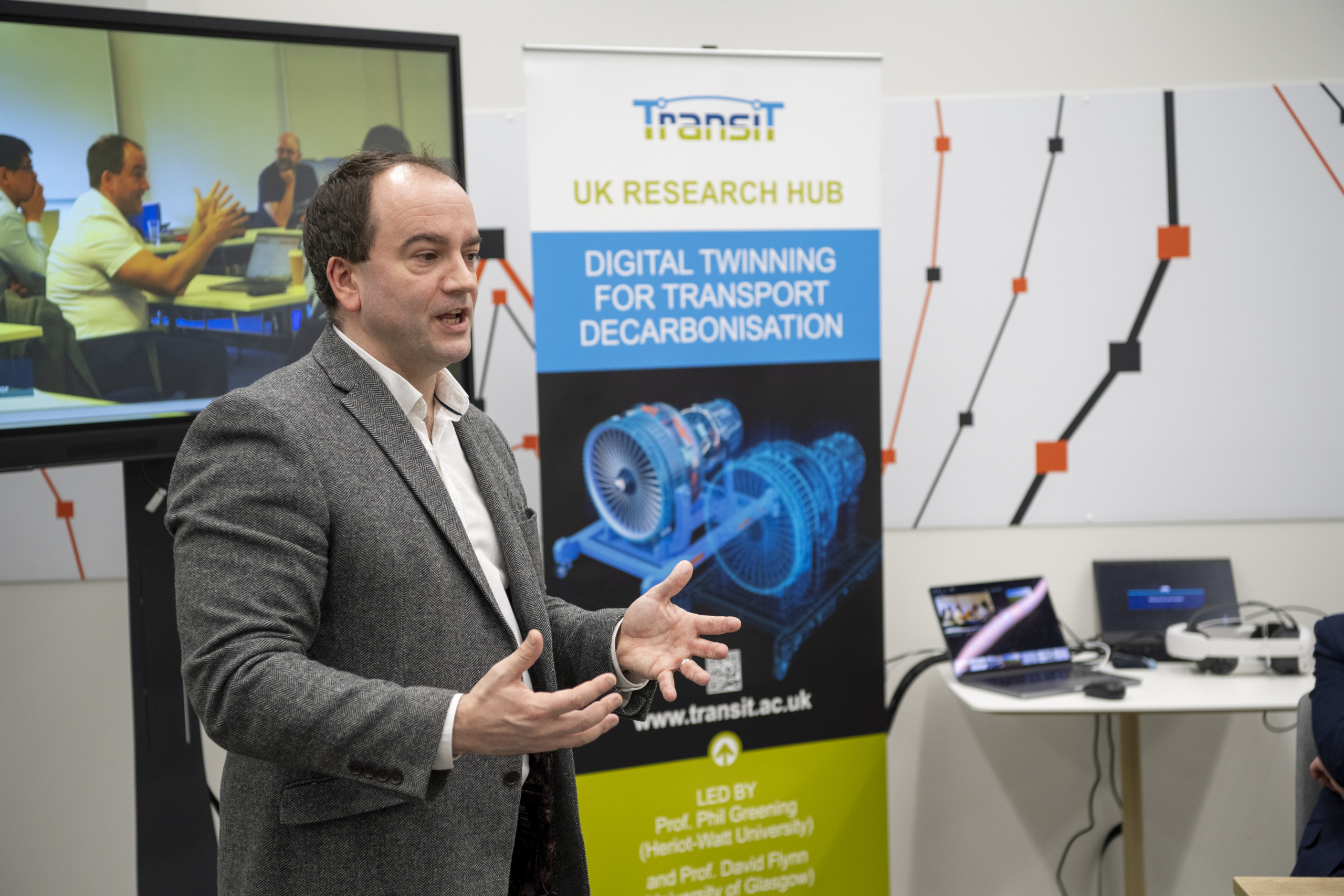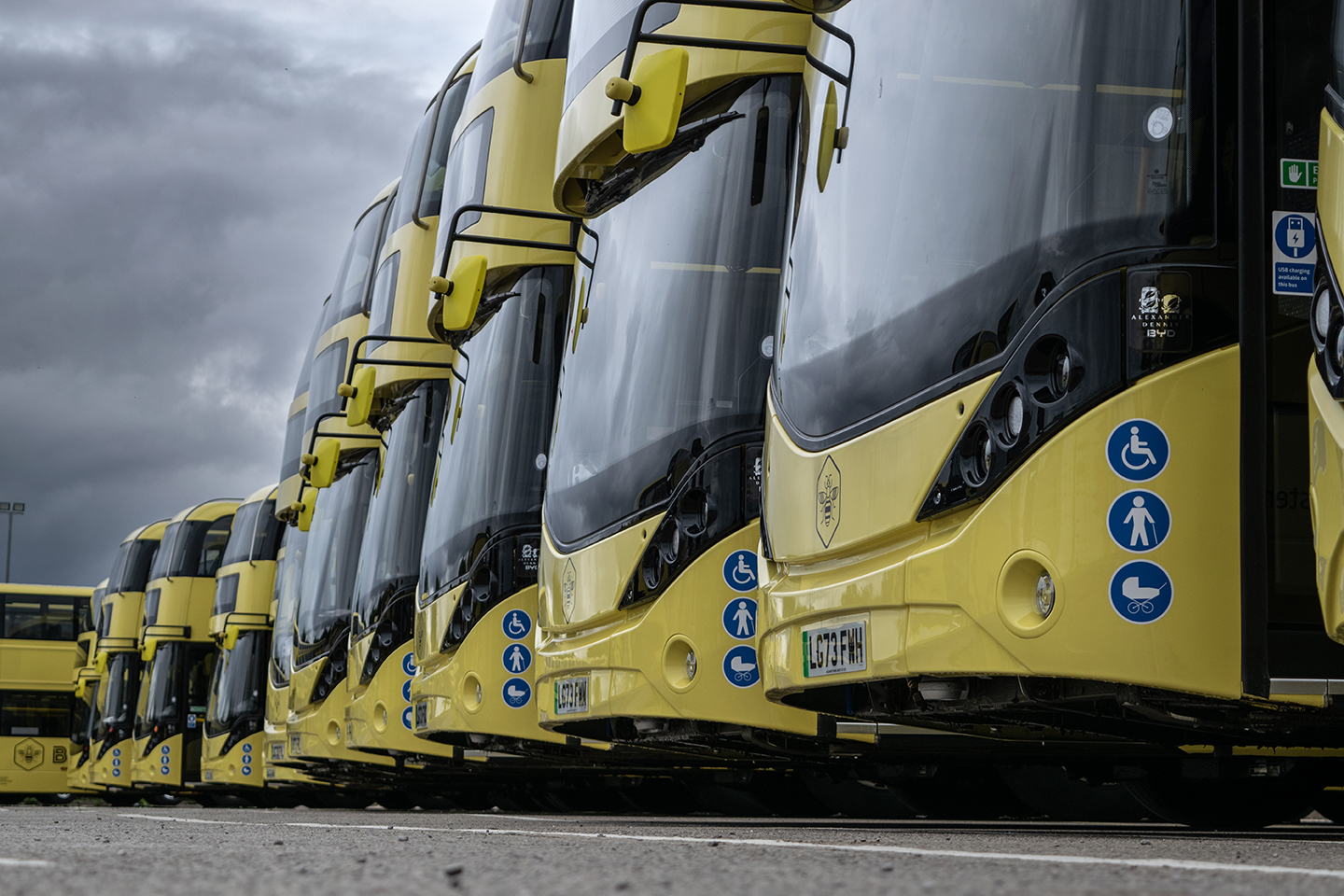Digital twins can play a significant role in transport decarbonisation, report suggests
Transport systems will depend increasingly on digital twins to function and to advance decarbonisation, researchers have suggested.
Digital twins are virtual replicas of the physical world that are already being widely used across the transport sector for functions including predictive maintenance, fleet management, route planning and product design.
In a report for UK research hub TransiT, researchers predict that transport systems will become “increasingly reliant” on digital twins for their operation.
The report, Twinning for Decarbonisation: Internet of Things Enablement for Transport Digital Twins, also highlights the “significant positive impact” digital twins can have on decarbonisation efforts, helping to reduce emissions and promote sustainability.
With digital twins, we can explore ‘what-if’ futures safely, and coordinate investment and policy decisions before spending real money or locking in the wrong solutions.
Professor David Flynn, TransiT Joint Programme Lead
But many challenges remain to the widescale adoption of digital twinning technologies, including data security and storage, common standards, cost and developing digital twinning skills and culture in the workforce.
The report was commissioned by TransiT, the UK’s largest research hub dedicated to rapidly decarbonising transport using digital twins, and compiled by CENSIS, Scotland’s Innovation Centre for sensing, imaging and Internet of Things technologies.

Professor David Flynn, Joint Programme Lead of TransiT.
Professor David Flynn, the Joint Programme Lead of TransiT, said: “Decarbonising transport is hard, because it requires changing whole systems – vehicles, infrastructure, energy supply, business models and user behaviour – all of which have been built around fossil fuels for decades. The transition is costly and uncertain. And progress in one area, for example, vehicles, only works if the other areas – like grid capacity, charging networks and planning rules – move in step.
“Digital twinning can help address these challenges by allowing us to explore the ‘big picture’ and enabling stakeholders to explore alternative pathways towards decarbonisation.
“With digital twins, we can explore ‘what-if’ futures safely, and coordinate investment and policy decisions before spending real money or locking in the wrong solutions. They help identify the most cost-effective pathways, reduce risk, and align infrastructure roll-out with real operational demand, speeding up delivery of low-carbon transport systems.”
The decarbonisation impact of digital twins includes, for example, improving traffic management and fuel use by simulating real-world transport systems and identifying efficiencies, the report notes.
In the future, CENSIS predicts that digital twins in transport will increasingly be used to understand, for example, the impact of driverless vehicles on traffic flow and the energy demand for electric vehicle charging.
“In this respect, the use of digital twins now appears to be a prerequisite for the advanced digitisation of the transport sector,” CENSIS added.

Buses in line at Transport for Greater Manchester. Photo courtesy of Transport for Greater Manchester.
Natalia Lukaszewicz, lead author of the CENSIS report, said: “The potential of digital twins in the transport sector is immense. They can play a crucial role in reducing transport’s environmental impact, for example by identifying fuel consumption savings or transport planning improvements. But industry-wide action is needed to unlock this potential. This includes agreeing cybersecurity frameworks and common standards, developing strong business cases for digital twins, including financial assessments, and understanding the impact of digital twins on an organisation’s skills and culture.”
The authors said the risks from cyber-attacks to transport digital twins include data theft, data corruption and data poisoning – when false, malicious or biased data is injected into datasets.
“All of these have the potential to compromise transport safety,” CENSIS said.
Emerging standards, frameworks and best practice include the ‘Gemini Principles,’ a set of proposed principles to guide the creation of a national digital twin for the UK – a connected ecosystem of digital twins.
On cost, CENSIS said the cost of implementing digital twins will vary by scale, but can run to hundreds of thousands of dollars. Data storage and processing for digital twins can also use a lot of energy. So organisations implementing digital twins need to clearly quantify costs and benefits, including building-in key performance indicators to monitor progress. They should also ensure that the decarbonisation benefits of digital twins outweigh their associated carbon impact.
On the skills and culture needed for industry-wide digital twinning, CENSIS’s recommendations include a focus on workforce upskilling or reskilling, and also change management to support the digital twin transformation in organisations.
The report also details the critical role in digital twin systems of ‘Internet of Things’ (IoT) technologies – the world of connected devices that talk to each other. In the transport sector, these can include sensors in vehicles, traffic cameras, roads or tracks that monitor data on aspects including vehicle health and traffic flows.
Digital twins use the data from these and other sources to replicate and then improve processes, components and systems. This includes sending back commands to its physical twin to initiate real-world changes.
IoT devices are also critical to decarbonising transport, for example by helping fleet managers optimise routes, monitor vehicle performance and promote eco-friendly driving practices, reducing fuel consumption and emissions.

Rolls-Royce is using digital twins to fine-tune its aviation engines. Photo courtesy of Rolls-Royce.
The CENSIS report was commissioned by University of Glasgow, which co-leads TransiT alongside Heriot-Watt University in Edinburgh. TransiT is a national research hub focused on using digital twins to rapidly decarbonise transport in the UK, including road, rail, air and maritime, across both passenger and freight. It is a collaboration of eight universities and almost 70 industry partners funded by the UKRI Engineering and Physical Sciences Research Council (EPSRC), the main funding body for engineering and physical sciences research in the UK.
Professor Flynn said: “Our vision at TransiT is to harness the transformative power of digital twinning and associated digital technologies, to decarbonise transport in the UK across all modes – road, rail, air and maritime.
“By exploring the current state of digital twinning technologies, and highlighting their future potential for transport, the CENSIS team have laid fantastic foundations for our research.”
Real-world examples of digital twinning mentioned in the report include:
- Rail transport company Alstom developing a digital twin to help manage and maintain its Pendolino train fleet on the UK’s busy West Coast Main Line.
- Rolls-Royce using digital twins to fine-tune its aviation engines and simulate a variety of conditions.
- Transport for Greater Manchester using sensors across the region to monitor cycling and walking schemes. This year, the local government body also announced it was developing a traffic digital twin to help improve the efficiency and reliability of the transport system.
- Singapore developing a digital twin of its port, with potential capabilities including real-time vessel monitoring and underwater visualisation of hull inspection and cleaning.
- Stuttgart in Germany developing a digital twin to address challenges including mobility and climate change in the city.
- A digital twin of Helsinki, Finland’s capital, with functionality including helping users to identify where to locate solar power
The authors of Twinning for Decarbonisation: Internet of Things Enablement for Transport Digital Twins, are Natalia Lukaszewicz, Cade Wells, Helen Sandison and Shrawan Jha.



